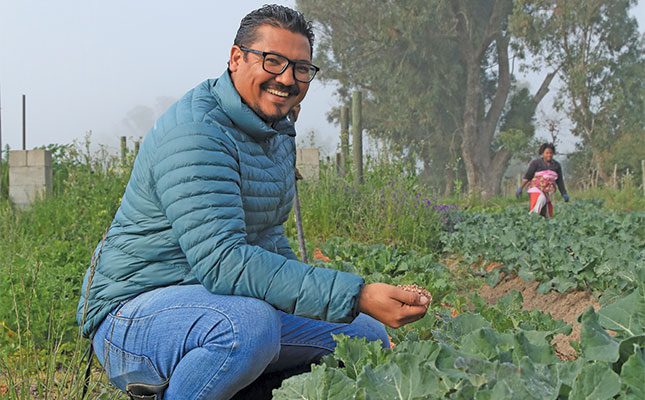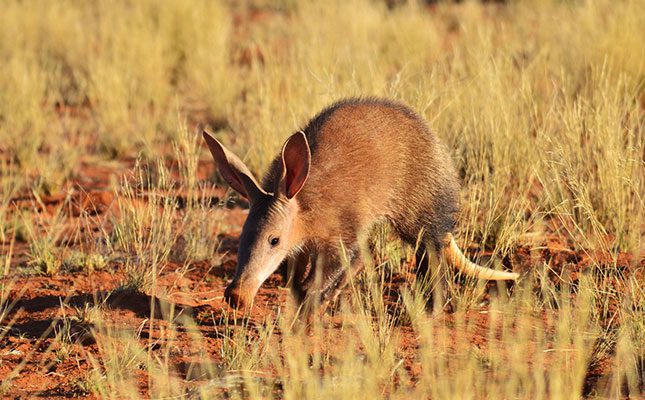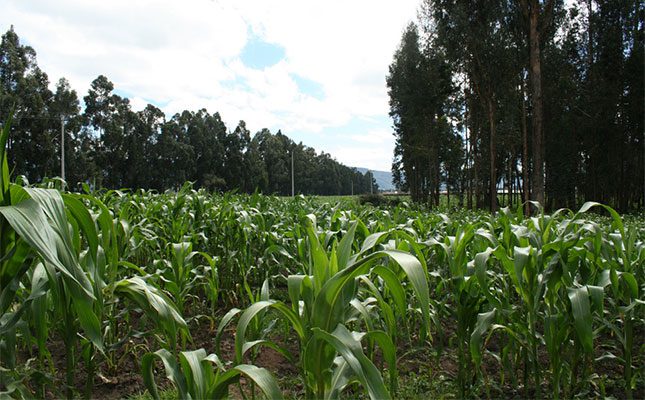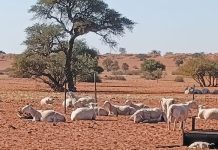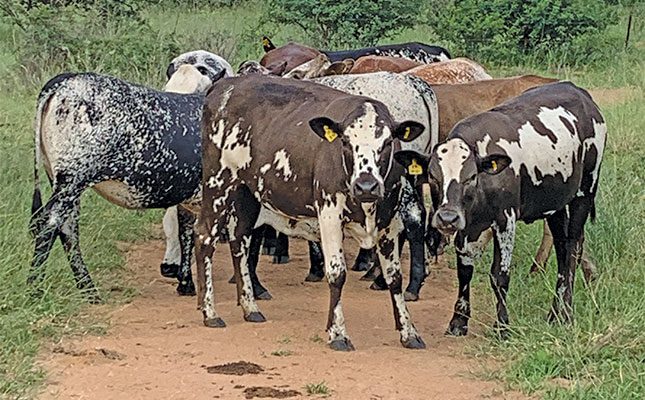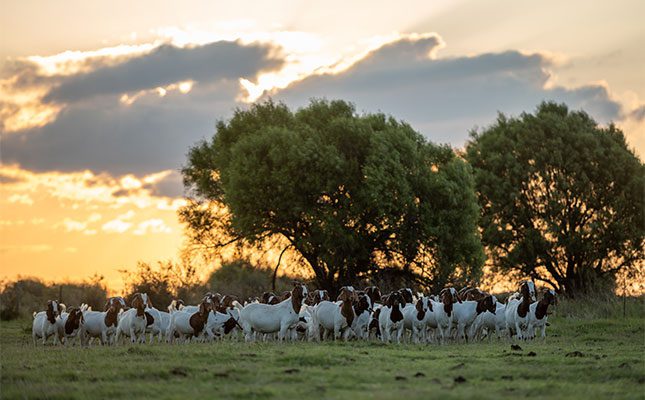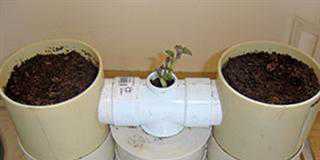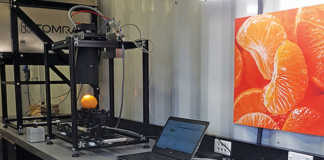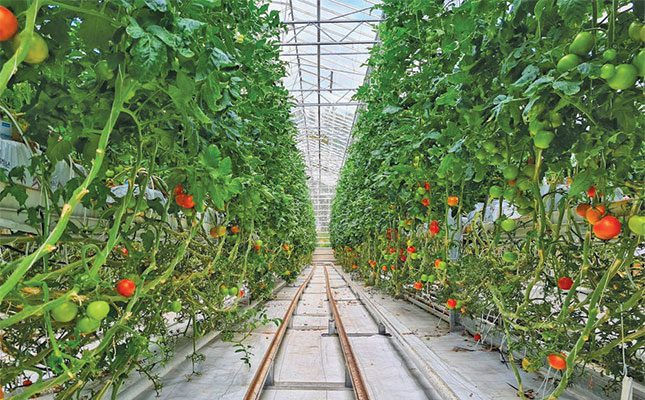
Photo: Biotechnology tools are used to develop crops that balance sustainability, resilience, and yield for a food-secure future.
As climate change intensifies extreme weather events, the agriculture sector is faced with the arduous task of finding ways to overcome these challenges.
This is where plant biotechnology comes in, as it is proving to be an indispensable tool for enhancing crop resilience to droughts and floods.
“The development of drought-tolerant crops begins with understanding the molecular mechanisms that govern a plant’s response to stress. We first need to comprehend what happens at the cellular level when a plant faces water scarcity,” Dr Hennie Groenewald, executive manager of Biosafety South Africa.
This foundational knowledge is gleaned through basic research, which identifies genes and proteins linked to specific stress responses. Groenewald says a prime example of stress adaptation in plants is heat shock proteins, which plants produce when they are exposed to high temperatures.
“By studying these proteins, we can manipulate their genetic expression, making crops more resistant to heat,” he explains.
He adds that while genetic engineering plays a significant role in the process, traditional breeding methods also contribute to enhancing crop resilience.
“The aim is to introduce or upregulate genes that improve a crop’s ability to withstand environmental stresses, regardless of the method used,” he explains.
Biotechnology tools
Groenewald says biotechnology tools like CRISPR-Cas9 (technology that allows scientists to edit the genome by changing specific DNA segments) are pivotal in translating these theoretical insights into real-world applications.
“With CRISPR-Cas9, we can precisely edit genes at DNA level, allowing for targeted interventions that enhance crop resilience,” he explains. This allows scientists to modify crops with remarkable precision, testing hypotheses in ways that weren’t possible before.
Once the foundational research and technology are in place, the work shifts to laboratory testing.
“We begin by editing or introducing specific genes into plants and exposing them to challenging conditions like drought or flooding,” explains Groenewald.
This proof-of-concept stage helps scientists determine whether genetic modifications lead to tangible improvements in resilience. But laboratory trials are just the beginning. Real-world field testing is essential for ensuring that genetically modified (GM) crops are not only resilient but also commercially viable.
“Field testing is crucial. We need to confirm that the modified crops perform well in actual farming conditions and can produce enough yield to contribute to food security,” he says.
The road from research to market is long and rigorous, with multiple stages of testing and optimisation.
“It’s not enough to simply develop a plant that survives extreme weather conditions. It must also thrive in a farming system and provide a viable yield,” says Groenewald.
While plant biotechnology offers tremendous promise, Groenewald acknowledges that much of the research is still in its infancy.
“We’ve laid the theoretical groundwork, and the tools to modify genes are at our disposal, but field testing and commercialisation are the next critical steps,” he says.
Water use and crop growth cycles
The potential for biotechnology to revolutionise crop resilience goes beyond drought tolerance. Groenewald mentions the importance of understanding how plants interact with their environment, particularly in terms of water use.
“Stomatal regulation, which controls water loss in plants, is a key area of focus,” he explains.
By genetically enhancing this process, [scientists can ensure that] crops become more efficient in conserving water during drought conditions. Similarly, research into osmotic potential allows scientists to improve plants’ ability to maintain cellular integrity under stress.
“Osmotic adjustment mechanisms include osmoprotectants such as proline, which help plants cope with water loss. We can enhance these natural defences through biotechnology to improve water efficiency and resilience in extreme conditions,” he says.
Additionally, biotechnology can help manipulate plants’ growth cycles to better suit changing environmental conditions. For crops like maize and rice, researchers have focused on adjusting photoperiod sensitivity, allowing for shorter growing seasons.
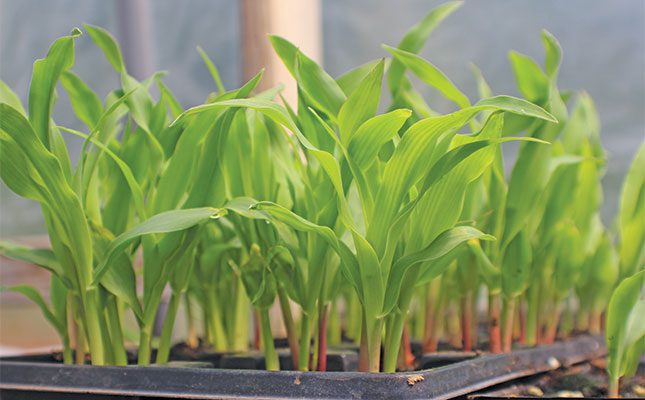
“By controlling the timing of crop maturation, we can ensure that plants reach maturity even under erratic weather patterns,” says Groenewald.
Addressing global challenges
Plant biotechnology continues to evolve, offering transformative solutions to global agricultural challenges, including food insecurity, which are exacerbated by climate change.
While these innovations offer substantial promise, Groenewald also stresses the importance of regulatory oversight.
“It’s essential to have a balance where innovation can proceed, but with appropriate safeguards to ensure that genetically modified organisms (GMOs) are safe for the environment and human consumption,” he says.
Vernalisation
Groenewald also emphasises the importance of vernalisation in crop growth, particularly for certain plants that require a period of exposure to low temperatures to ensure germination.
“You need a certain number of cold degrees; you need coldness,” he says, explaining that crops like hops are traditionally grown in cooler regions, closer to the poles.
In South Africa, the cultivation of hops has been adapted to local conditions, especially in regions like George, where breeding programmes have focused on reducing the amount of sunlight required for growth.
This type of genetic adjustment illustrates the potential of biotechnology to adapt crops to local environments.
“By understanding the needs of plants and their biological mechanisms, we can make them better suited to our specific climates,” explains Groenewald.
Biofortification to fight malnutrition
The biofortification of crops is another area where biotechnology is making a significant impact. These crops’ vitamin and mineral content is enhanced, thereby addressing nutritional deficiencies. According to Groenewald, examples are golden rice, which is rich in vitamin A; iron-fortified beans; and zinc-enriched wheat.
“These innovations are crucial in regions where nutrient deficiencies are widespread, particularly among vulnerable populations,” he says.
In South Africa and other parts of Africa, crops like sorghum, cassava, and barley are being biofortified to provide higher levels of minerals and soluble fibres.
“Biotechnology allows us to improve the nutritional density of these staple crops, which is essential for tackling malnutrition in regions with food security challenges,” adds Groenewald.
Improving sustainability
Groenewald also discusses how biotechnology can help reduce agriculture’s carbon footprint by increasing efficiency and reducing resource inputs.
“If we can use biotechnology to extend the shelf life of produce like bananas, for example, it will reduce waste at the consumer level and, in turn, lower the overall carbon footprint,” he explains.
Moreover, innovations like no-till farming – where biotechnology helps to reduce the need for chemical fertilisers and pesticides – also contribute to a decrease in carbon emissions.
“The reduced use of fuel and fertiliser mean a reduction in the agriculture sector’s carbon footprint,” says Groenewald.
Another significant development in biotechnology is the enhancement of plant-microbe symbiosis. Crops like soya bean naturally form relationships with micro-organisms that fix nitrogen in the soil, reducing the need for synthetic fertilisers.
“This natural process can be optimised through biotechnology, contributing to more sustainable farming practices,” he says.
Public perception and education
While biotechnology presents a vast number of opportunities for agriculture, public perception of GMOs remains a complex issue. Groenewald acknowledges that there is a significant divide in public opinion about such crops.
“There are those who reject GMOs on principle, much like there are groups who oppose vaccines. It’s about deeply held values and perceptions of what constitutes ‘natural’,” he explains. To address these concerns, Groenewald says there is a need for better communication that goes beyond simply educating the public about the science.
“It’s crucial to show the tangible benefits of GM products and not just talk about the science behind them,” he says.
By focusing on real-world outcomes, such as improved health and reduced environmental impact, advocates may be able to sway the public to become more open to embracing such technologies.
Groenewald also draws a parallel to GM medicines, such as insulin, which have been widely accepted due to their role in helping to manage various health conditions.
“When GM crops offer clear health benefits to consumers, the public’s perception of them will likely shift; for example, choosing between regular rice and rice enriched with vitamin A for better health could change the conversation around GMOs,” he says.
Transforming agriculture’s future
Plant biotechnology offers an array of solutions that can transform agriculture, improving crop resilience, nutrition, sustainability, and the overall production efficiency of agricultural systems.
Groenewald remains optimistic about the potential of biotechnology to address pressing global issues like climate change, food security, and malnutrition.
As advances in research are made and communication with the public improves, the world may increasingly turn to biotechnology to simultaneously feed a growing population and protect the environment.
Ultimately, biotechnology stands poised to play a central role in shaping the future of agriculture, ensuring that it remains productive, sustainable, and adaptive to the challenges that lie ahead.
“The ultimate goal is to provide farmers with crops that are not only resilient to extreme weather [conditions] but also capable of delivering consistent yields. With biotechnology, we are making great strides in ensuring food security in the face of climate change,” concludes Groenewald.
Email Dr Hennie Groenewald at [email protected].

